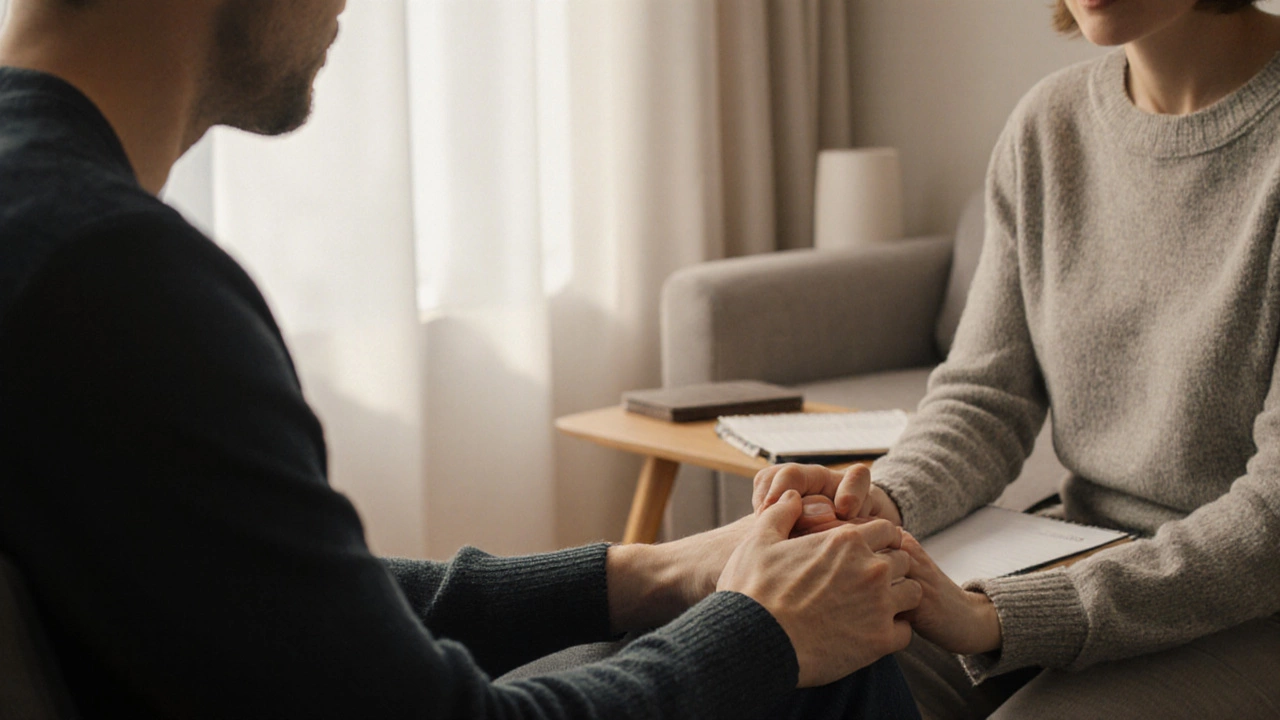Body Language Therapy – What It Is and Why It Works
Ever noticed how a relaxed posture can make you feel calmer, or how a frown can crank up stress? That’s the core idea behind body language therapy – using the way you move, stand, and gesture to influence your thoughts and emotions. It’s not magic; it’s a simple mind‑body shortcut that therapists and everyday people use to break negative patterns and build confidence.
How Body Language Shapes Your Mind
Research shows that the brain reads your own body cues just like it reads others’. When you sit up straight, shoulders back, and breathe deeply, the nervous system sends a “safe” signal that lowers cortisol, the stress hormone. Conversely, slouching or crossing arms can keep the fight‑or‑flight alarm on. In therapy sessions, a coach might ask you to adopt an “open” stance while talking about a difficult topic. The shift in posture often makes the conversation feel less threatening, letting you access deeper feelings.
In practical terms, body language therapy helps you:
- Reduce anxiety by using power‑poses for a few minutes each day.
- Improve relationships by mirroring a partner’s gestures to build rapport.
- Boost self‑esteem by watching your facial expressions in a mirror and choosing neutral or positive looks.
Simple Exercises to Start Your Own Therapy
You don’t need a pricey session to see results. Try these three easy practices and notice the change within a week:
- The 2‑Minute Power Pose. Stand with feet shoulder‑width, hands on hips, chest lifted. Hold for 120 seconds while breathing slowly. Do it before a meeting or a stressful call.
- Mirror Check. Spend two minutes each morning in front of a mirror. Observe your default facial expression. Consciously soften your eyebrows and smile gently, then hold that feel for ten seconds before heading out.
- Walk the Talk. Walk in a hallway or around your home with a purposeful stride. Imagine each step as forward momentum in a goal you care about. This physical rhythm can translate into mental progress.
If you want more structure, many therapists integrate body language drills into cognitive‑behavioral sessions. They might record a role‑play, point out tension spots, and coach you to replace them with relaxed gestures. Over time, the new habits become automatic, and the emotional load lightens.
When you feel stuck, seeking a certified body language therapist can accelerate progress. These professionals have training in both psychology and non‑verbal cues, so they can tailor exercises to your specific challenges—whether it’s public speaking, social anxiety, or recovering from a breakup. Many clinics in India now list “body language therapy” as a service, and you can often book a short intro session online.
Try weaving body language cues into daily routines. While waiting in line, straighten your back and relax your shoulders. During a phone call, sit up tall even though the other person can’t see you; the posture still steadies your voice. Little habits add up, turning a conscious practice into an effortless part of who you are.





